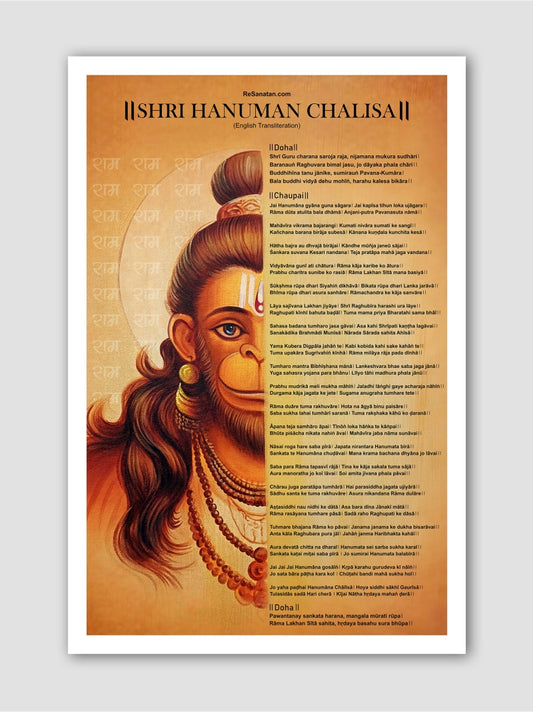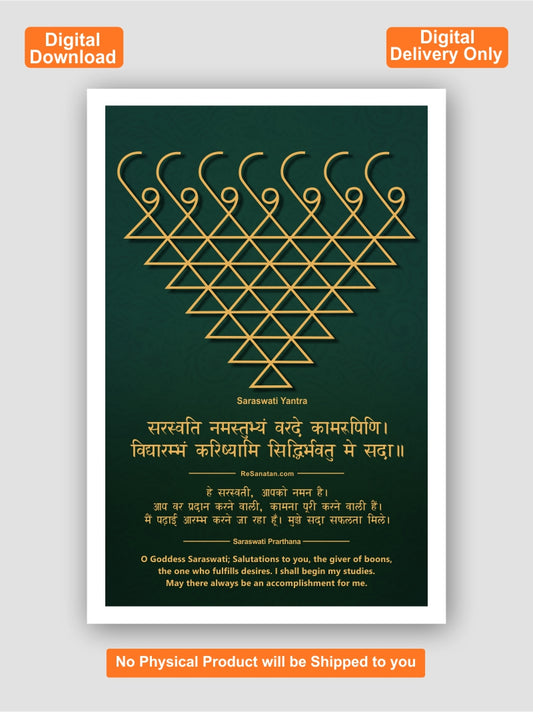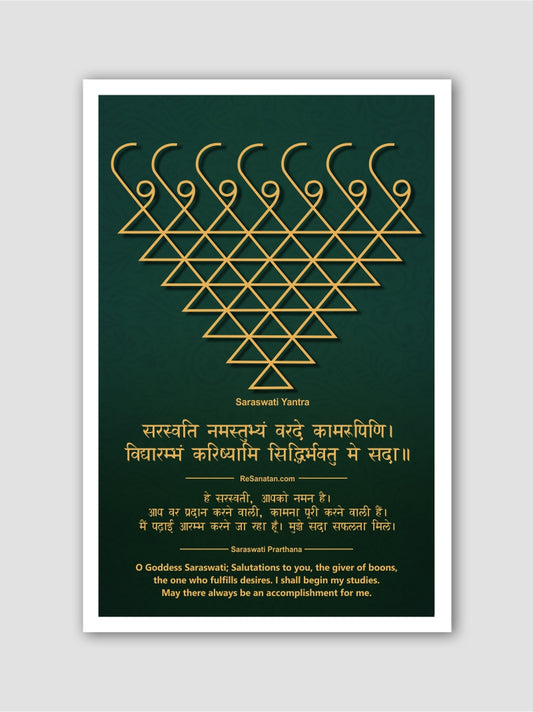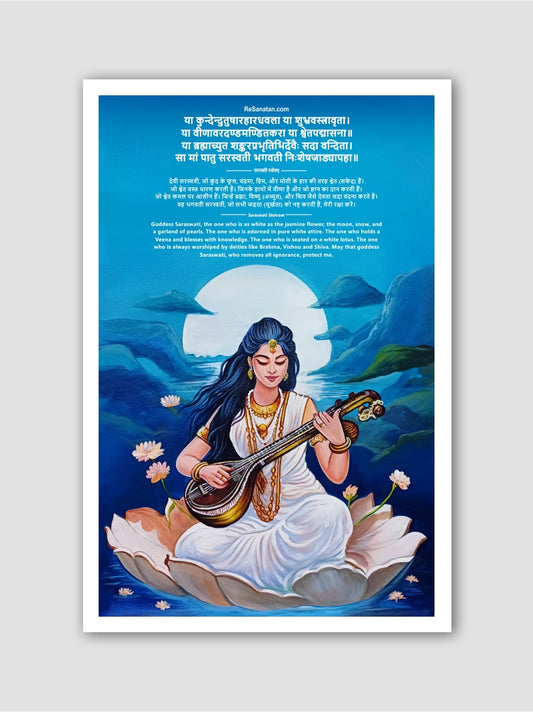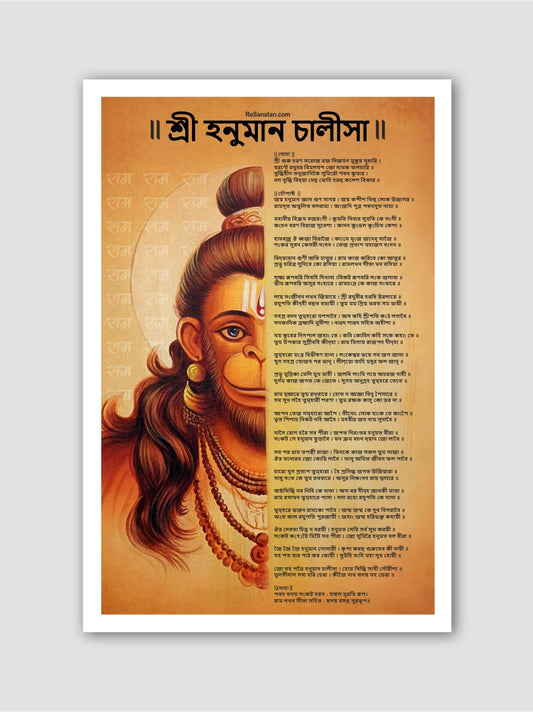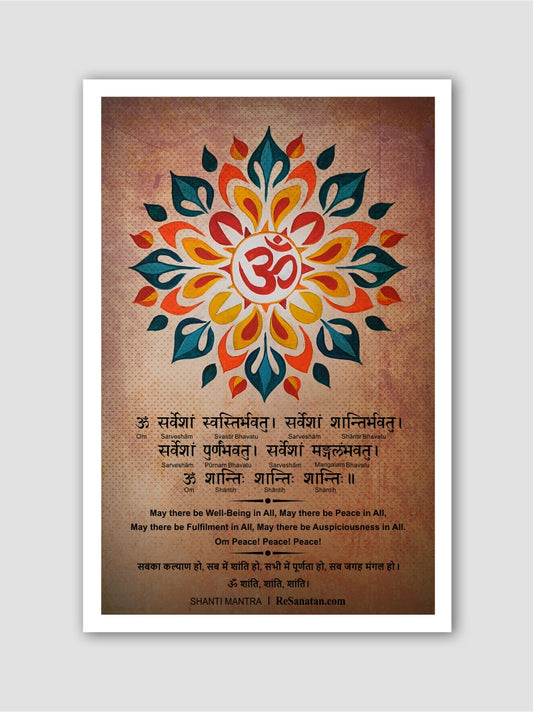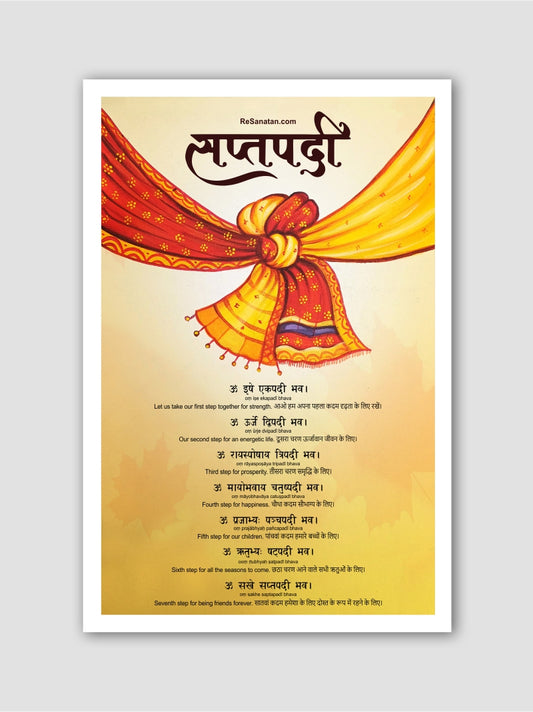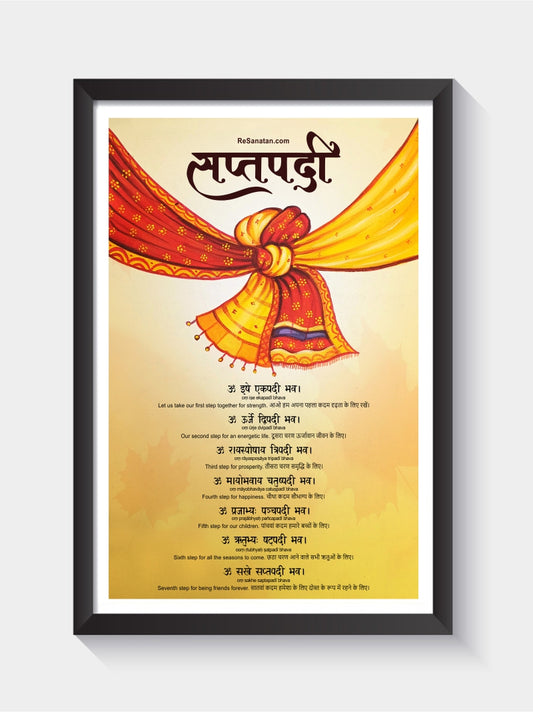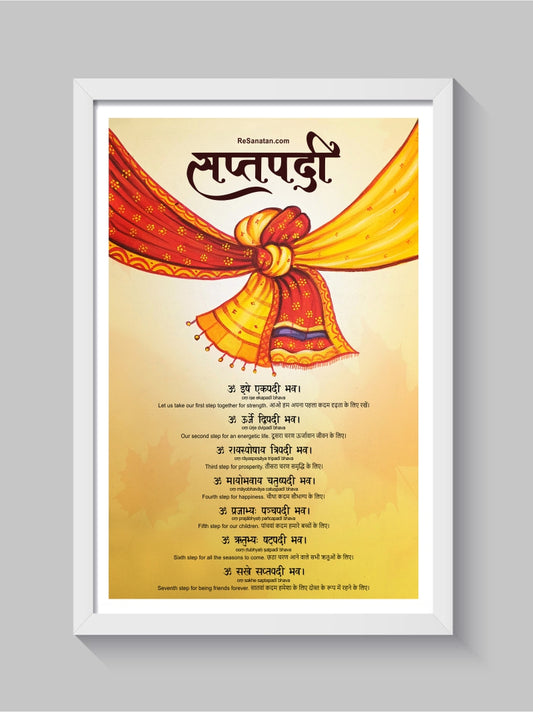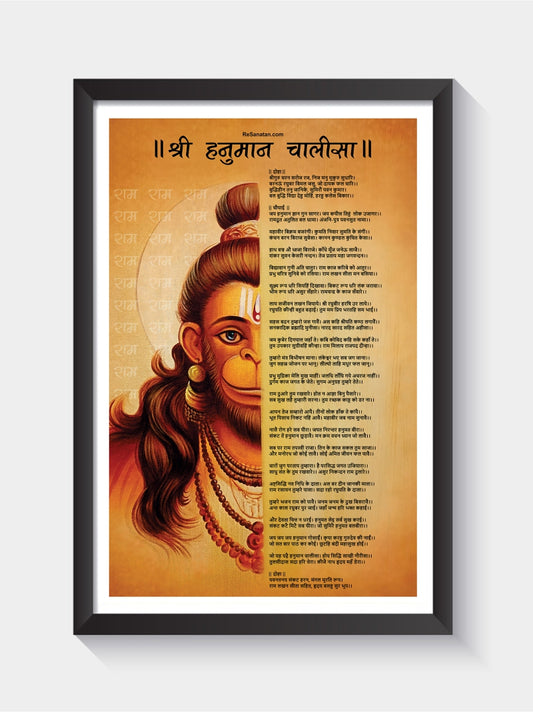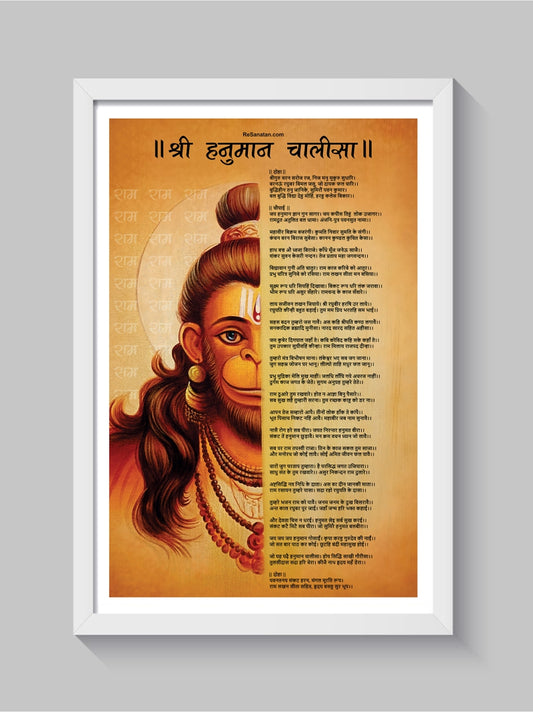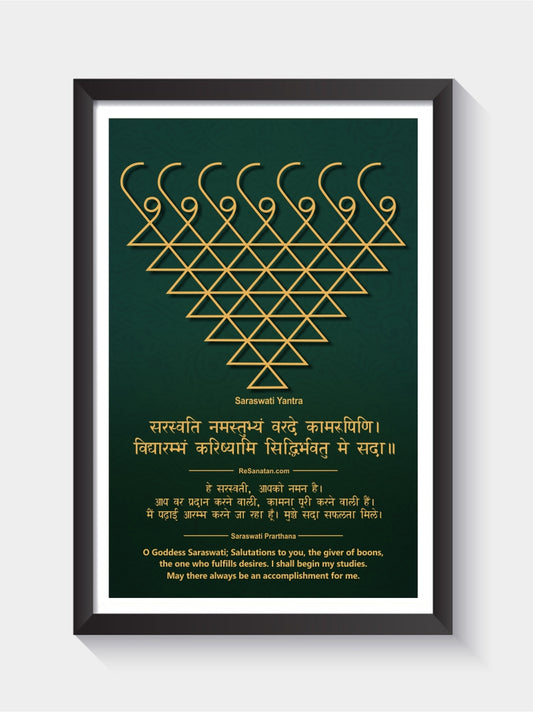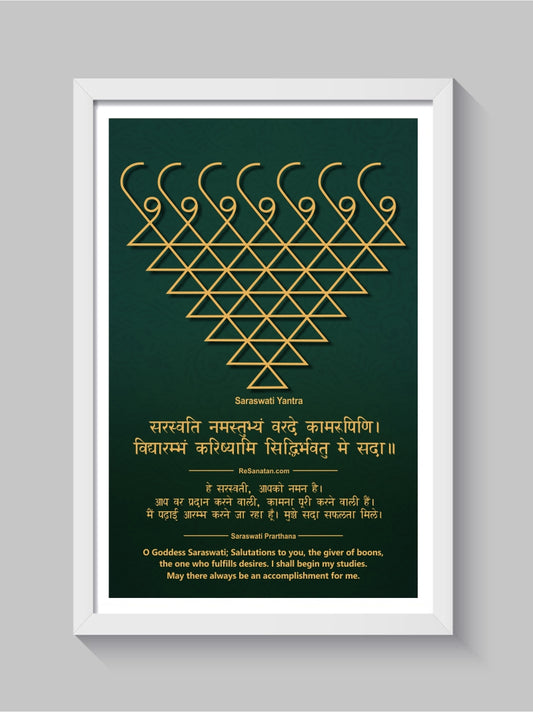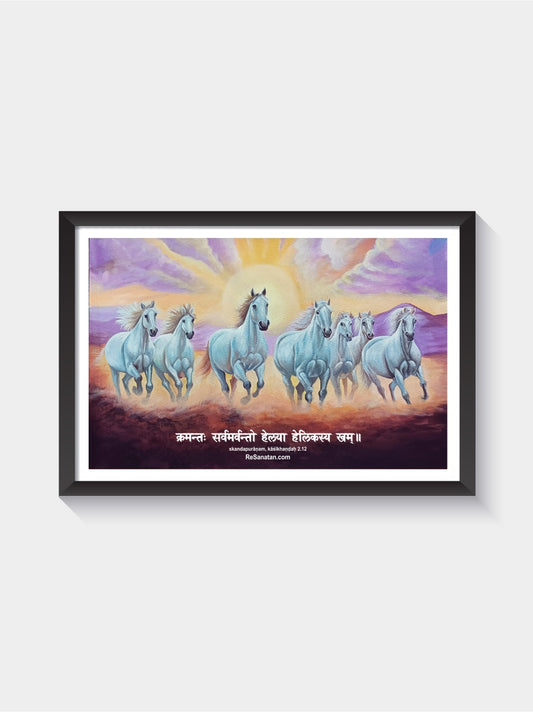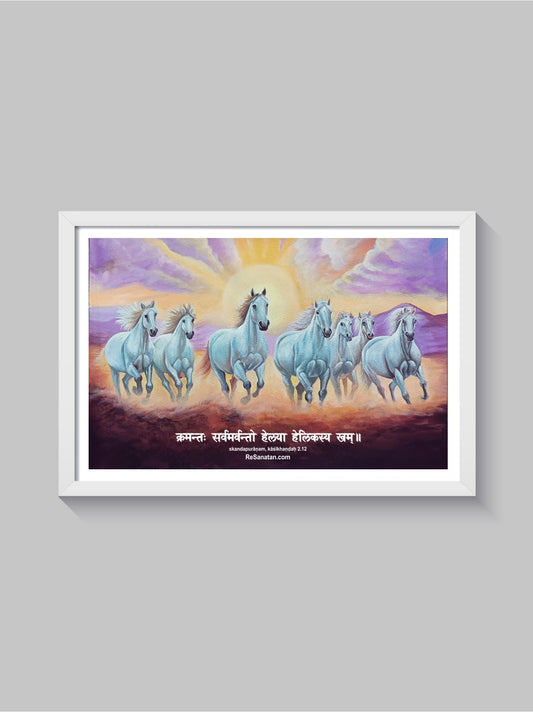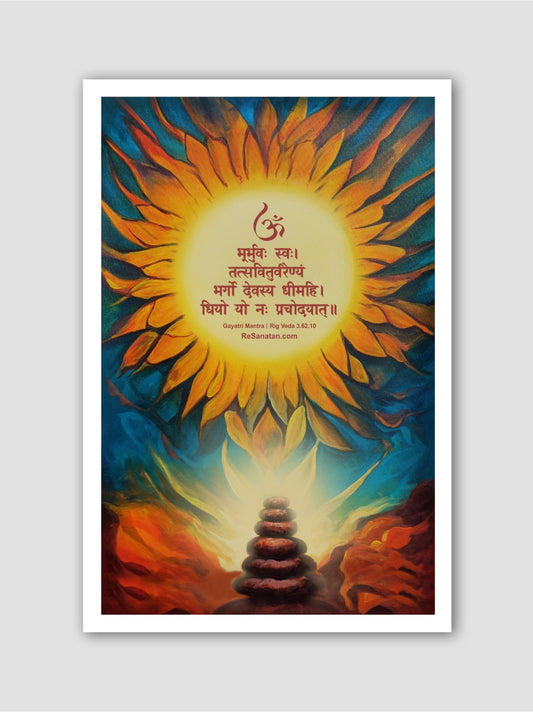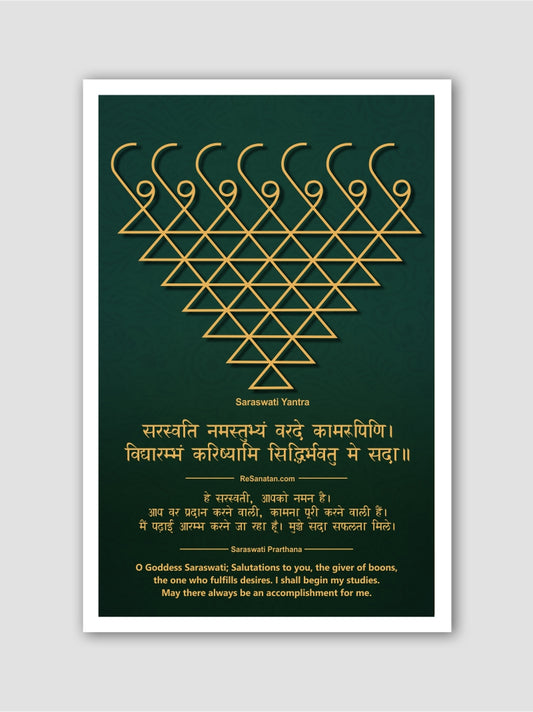Krishna, one of the most revered and celebrated deities in Hinduism, is regarded as the eighth avatar (incarnation) of Lord Vishnu, the Preserver in the Hindu trinity (Trimurti). He is a multifaceted personality, known for his wisdom, divine playfulness, and heroic feats, making him a central figure in many Hindu scriptures and traditions. Krishna is worshipped by millions worldwide, and his influence extends beyond religion into art, philosophy, music, and culture.
Birth and Early Life of Krishna
Krishna’s birth and early life are filled with miraculous events and divine interventions that have captivated the hearts of millions for centuries. His story is a blend of mythology, symbolism, and deep spiritual significance, representing the triumph of good over evil and the incarnation of the divine in human form.
Prophecy of Krishna's Birth
The story of Krishna’s birth begins with a prophecy that foretold the downfall of the tyrannical king, Kansa, who ruled the city of Mathura. Kansa, known for his cruelty, had usurped the throne of his father, King Ugrasena, and established a reign of terror. One day, a divine voice (akashvani) prophesied that the eighth child of his sister, Devaki, would be the one to end his reign. Fearful for his life, Kansa immediately imprisoned Devaki and her husband, Vasudeva, in a dungeon. To prevent the prophecy from coming true, Kansa vowed to kill each of Devaki’s children at birth.
The Divine Birth
Kansa mercilessly killed Devaki’s first six children, one by one, as soon as they were born. However, the seventh child, Balarama, was miraculously transferred from Devaki's womb to the womb of Rohini, Vasudeva’s first wife, through divine intervention by Lord Vishnu. Thus, Balarama was spared from Kansa’s wrath.
When Devaki conceived her eighth child, a series of divine events unfolded. On the night of Krishna’s birth, a celestial atmosphere filled the dungeon. Devaki and Vasudeva were visited by Lord Vishnu, who revealed his divine form and informed them that their child was an incarnation of Vishnu himself. He told Vasudeva to take the newborn baby to Gokul, across the Yamuna River, where he would be safe from Kansa’s tyranny. Krishna was born at midnight on the eighth day of the waning moon in the month of Bhadrapada (August-September), which is celebrated today as Janmashtami, one of the most joyous festivals in Hinduism.
The Miraculous Escape to Gokul
The moment Krishna was born, the shackles binding Vasudeva fell off, and the dungeon doors swung open, allowing him to escape. Carrying the newborn Krishna in a basket, Vasudeva set out on a perilous journey to Gokul. As he reached the banks of the Yamuna River, he faced a challenge—the river was in full spate, and it seemed impossible to cross. But as Vasudeva stepped into the water, the river miraculously parted, allowing him safe passage.
It is said that the great serpent, Sheshnag, appeared above Vasudeva and Krishna to shield them from the pouring rain, further illustrating the divine protection surrounding Krishna from the moment of his birth. Upon reaching Gokul, Vasudeva left the infant in the care of Nanda and Yashoda, a humble cowherd couple, and took their newborn daughter back to Mathura.
In the morning, when Kansa came to kill Devaki’s eighth child, believing it to be a boy, he was shocked to find a girl instead. As Kansa attempted to kill the baby, she slipped out of his grasp and ascended into the sky, revealing herself as the goddess Yogamaya. She warned Kansa that the child destined to kill him had already been born and was safely out of his reach.
Krishna’s Childhood in Gokul
Krishna grew up in the village of Gokul, under the loving care of Nanda and Yashoda, unaware of his divine origin and the dangers lurking in Mathura. His early childhood was filled with playful and mischievous acts, earning him the affectionate title of “Makhan Chor” (butter thief). Stories of young Krishna stealing butter, teasing the village girls (gopis), and charming everyone with his flute are legendary.
Though his childhood was marked by joyous play, it was also fraught with danger, as Kansa sent several demons to kill him, fearing the prophecy. However, Krishna, even as a child, displayed his divine powers by defeating each of these demons. Some of the famous tales include his slaying of the demoness Putana, who tried to kill him by feeding him poisoned milk, and his subduing of the giant serpent Kaliya, who had poisoned the waters of the Yamuna River.
One of the most well-known episodes from Krishna’s early life is his encounter with Kaliya. The people of Gokul were suffering because Kaliya, a deadly serpent, had contaminated the Yamuna River. Krishna, in his divine wisdom, jumped into the river and danced on Kaliya’s many heads, forcing the serpent to surrender and leave the river, restoring peace to the villagers.
The Move to Vrindavan
As Krishna grew older, Nanda and Yashoda, along with the entire village of Gokul, decided to move to the nearby village of Vrindavan to protect Krishna from the constant threats posed by Kansa’s demons. In Vrindavan, Krishna continued his playful and mischievous ways, captivating the hearts of the villagers, especially the gopis, with his charm, flute-playing, and divine presence.
Krishna’s time in Vrindavan is also marked by his close relationship with his elder brother, Balarama. Together, the two brothers herded cows, played in the forests, and participated in many adventures that are still recounted with joy by devotees.
One of the most famous tales from this period is Krishna’s lifting of the Govardhan Hill. When the villagers were preparing to offer prayers and sacrifices to Indra, the god of rain, Krishna advised them to worship the Govardhan Hill instead, which provided them with food and shelter. Enraged, Indra unleashed a massive storm on the village. To protect the people, Krishna lifted the entire Govardhan Hill with his little finger, holding it up like an umbrella for seven days and nights until Indra relented. This event not only demonstrated Krishna’s divine strength but also reinforced his role as the protector of his devotees.
Significance of Krishna's Early Life
Krishna’s early life is rich in symbolism and lessons for devotees. His miraculous birth and survival against all odds reflect the divine assurance that good will always triumph over evil. His childhood mischief, such as stealing butter, symbolizes the innocent and playful nature of the divine, emphasizing the importance of joy, love, and play in life. Krishna’s interactions with the gopis, especially his divine love for Radha, illustrate the soul’s longing for union with the divine, which is a central theme in Hindu spirituality.
Krishna’s early years also teach the value of divine protection and grace. Despite the many dangers he faced, Krishna was always under divine protection, highlighting the belief that God will always protect those who place their trust in him. His actions in Vrindavan, such as lifting the Govardhan Hill, show his role as a guardian and protector of his devotees, ensuring their safety and well-being.
Krishna as the Divine Lover
Krishna, one of the most revered and multifaceted deities in Hinduism, is often portrayed as the divine lover, symbolizing the deepest expression of love, devotion, and spiritual longing. This aspect of Krishna’s life is most vividly captured in his relationship with Radha and the gopis (cowherd maidens) of Vrindavan. Through these relationships, Krishna exemplifies a form of love that transcends the physical and the material, merging into a profound spiritual experience that represents the soul's yearning for union with the divine.
The depiction of Krishna as the divine lover is one of the most captivating aspects of his personality, resonating deeply with devotees and artists alike. His love story, especially with Radha, is celebrated as the epitome of devotional surrender (bhakti), and it has influenced generations of poetry, music, dance, and art across India and beyond.
Krishna and Radha: The Eternal Love
At the heart of Krishna’s role as the divine lover is his relationship with Radha, who is considered the supreme devotee and embodiment of pure, selfless love. Radha’s love for Krishna is seen as the highest form of bhakti (devotion), where the devotee’s soul longs to unite with the divine. Unlike worldly love, which is often characterized by desire and attachment, Radha’s love for Krishna is spiritual, transcending the physical realm and symbolizing the soul’s intense yearning for God.
In the Bhagavata Purana and other ancient scriptures, Radha is portrayed as Krishna's beloved and the leader of the gopis. The relationship between Radha and Krishna is a metaphor for the relationship between the individual soul (jivatma) and the universal soul (paramatma). It represents the eternal, unbreakable bond between the divine and the devotee. Radha's complete surrender to Krishna exemplifies the path of devotion (bhakti yoga), where love and devotion become the ultimate means of attaining union with the divine.
The love story of Radha and Krishna is unique in that it doesn’t culminate in traditional marriage or physical union, but instead in an eternal spiritual connection. Krishna's love for Radha is a symbol of divine love, which is unconditional and beyond the limitations of the material world. Radha’s longing and devotion for Krishna are seen as the highest expression of a soul’s devotion to God.
The Rasa Lila: Dance of Divine Love
One of the most enchanting episodes in Krishna's life that highlights his role as the divine lover is the Rasa Lila, the dance of divine love. The Rasa Lila is a celestial dance performed by Krishna with Radha and the gopis in the forests of Vrindavan. This dance is not merely a physical expression of joy, but a deep spiritual metaphor for the divine union between God and the individual soul.
According to the legends, Krishna played his flute one moonlit night, and upon hearing its divine melody, the gopis were irresistibly drawn to him. Leaving behind their families, duties, and attachments, they rushed to the forest to be with Krishna. This symbolizes the soul’s abandonment of worldly distractions in its quest to find the divine.
During the Rasa Lila, Krishna miraculously multiplied himself so that he could dance with each gopi individually, making each one feel that they had his complete attention. This act is symbolic of Krishna’s omnipresence and his ability to make each devotee feel uniquely loved and cherished. The dance itself represents the eternal dance of creation, where the divine and the soul are in constant motion, yet always in harmony with each other.
The Rasa Lila is also a profound lesson in devotion. The gopis’ surrender to Krishna represents the ideal devotee’s surrender to God, where the devotee loses all sense of ego and individuality in the presence of the divine. Krishna’s role in the Rasa Lila teaches that true devotion is about complete surrender, where the soul becomes one with the divine in an act of pure, selfless love.
Krishna's Love for the Gopis
Beyond his relationship with Radha, Krishna’s interactions with the gopis are another significant aspect of his divine love. The gopis, simple cowherd maidens of Vrindavan, represent the ideal devotees, completely absorbed in their love and devotion to Krishna. They are often portrayed as abandoning all worldly ties, including their families, homes, and social obligations, in their desire to be with him. This total dedication signifies the spiritual seeker’s abandonment of worldly attachments in favor of divine love.
Krishna’s playful and loving interactions with the gopis often carry deeper symbolic meanings. For example, his act of stealing their clothes while they bathed in the Yamuna River is interpreted as a metaphor for stripping away the ego and the material coverings of the soul, leaving the devotee in a state of pure, unadulterated devotion. In this way, Krishna’s playful pranks are not just mere acts of mischief, but divine teachings that guide the soul toward spiritual growth and realization.
The love between Krishna and the gopis is also symbolic of the concept of lila (divine play), which emphasizes the playful, joyous nature of the divine. In Hinduism, lila refers to the idea that the universe and all creation are part of God's play, and Krishna, as the supreme lover, engages in this play with his devotees. The gopis’ willingness to participate in this divine play reflects the devotee’s readiness to embrace God in all aspects of life, whether through joy, sorrow, or love.
Radha-Krishna: Symbol of Bhakti Yoga
In Hindu spirituality, the love between Radha and Krishna is often viewed as the highest expression of bhakti yoga, the path of devotion. Bhakti yoga is one of the key paths to spiritual enlightenment, and it emphasizes the importance of loving surrender to the divine. Radha’s unwavering devotion to Krishna, despite the challenges and obstacles she faced, represents the soul’s journey toward God through love.
Krishna, as the divine lover, encourages devotees to cultivate pure, unconditional love for God, free from any desire for personal gain. This form of love is not bound by the limitations of the material world, but instead, it is a transcendental love that leads to the ultimate goal of spiritual union with the divine. Radha’s love for Krishna is selfless and unwavering, demonstrating that the path of bhakti requires complete dedication and surrender.
In this sense, Radha-Krishna’s relationship is not simply about romantic love but is a powerful spiritual allegory for the soul’s intense longing for union with God. Devotees who follow the path of bhakti seek to cultivate the same kind of love and devotion that Radha had for Krishna, viewing their relationship as the highest ideal of spiritual love.
The Symbolism of Krishna as the Divine Lover
Krishna as the divine lover carries profound symbolic meanings that resonate across various aspects of Hindu philosophy and spirituality. His love for Radha and the gopis represents the ultimate connection between the individual soul and the universal divine consciousness. Through his interactions with them, Krishna teaches that love for the divine transcends all boundaries—whether they are physical, emotional, or societal.
The stories of Krishna as the divine lover are also symbolic of the path of bhakti, where the devotee seeks union with God through love and devotion rather than through rituals or intellectual pursuits. Krishna’s role as the divine lover embodies the idea that God is not distant or unreachable but is accessible through love, joy, and devotion. His playful nature, his loving interactions, and his ability to make each devotee feel cherished are all symbols of the divine’s intimate and loving connection with all beings.
Influence of Krishna as the Divine Lover in Art and Culture
The theme of Krishna as the divine lover has left an indelible mark on Indian art, music, poetry, and dance. Radha and Krishna’s love story is celebrated in countless devotional songs (bhajans) and poems, especially by saints and poets of the Bhakti movement like Mirabai, Surdas, and Jayadeva. Jayadeva’s Gita Govinda is one of the most famous works dedicated to the love between Radha and Krishna, portraying their divine union as the highest expression of spiritual love.
In Indian classical dance forms such as Kathak and Bharatanatyam, the Rasa Lila and the love stories of Radha and Krishna are often performed with great devotion, capturing the beauty and symbolism of their relationship. Krishna’s divine love also finds expression in paintings, sculptures, and temple art, where he is often depicted playing the flute, surrounded by Radha and the gopis, symbolizing the divine music that calls the soul toward God.
Krishna and the Bhagavad Gita
Krishna’s role in the Bhagavad Gita is one of the most significant contributions to Hindu philosophy and spirituality. As a dialogue between Krishna and the warrior prince Arjuna, the Bhagavad Gita is a scripture that delves into profound spiritual and ethical questions, offering insights into duty (dharma), selflessness, the nature of reality, and the paths to spiritual liberation. Krishna, in his capacity as Arjuna’s charioteer and divine guide, reveals timeless teachings that have shaped the spiritual lives of millions for centuries.
The Bhagavad Gita, often referred to simply as the Gita, is part of the Indian epic Mahabharata and consists of 700 verses spread across 18 chapters. The dialogue takes place on the battlefield of Kurukshetra, just before the great war between the Pandavas and the Kauravas begins. Faced with the overwhelming moral dilemma of fighting against his own relatives and loved ones, Arjuna is stricken with doubt and confusion. At this pivotal moment, Krishna steps in to provide guidance, unveiling spiritual truths that transcend the immediate context of war and speak to the human condition.
The Setting: Arjuna’s Dilemma
The Bhagavad Gita begins with Arjuna, the greatest warrior of the Pandavas, standing on the battlefield, prepared to fight against the Kauravas, a faction of his own family who have wrongfully taken their kingdom. However, as he surveys the battlefield, Arjuna is struck by a deep moral crisis. He sees his beloved teacher Dronacharya, his grandfather Bhishma, and many other relatives and friends on the opposite side. The prospect of killing his own kin in battle overwhelms him with sorrow, fear, and confusion.
Arjuna lays down his bow and arrows, unable to proceed with the fight. He is caught in a moral paradox—his duty as a Kshatriya (warrior class) requires him to fight in the war to uphold justice (dharma), but his conscience is tormented by the thought of killing his family members. It is in this moment of despair that Arjuna turns to Krishna, who has been serving as his charioteer, for guidance.
Krishna’s Role as a Spiritual Teacher
Krishna, who is much more than a mere charioteer, takes on the role of Arjuna’s spiritual guide. In response to Arjuna’s questions, Krishna delivers a series of teachings that form the core of the Bhagavad Gita. These teachings are not limited to Arjuna’s immediate dilemma but encompass broader philosophical and spiritual principles that apply to all of humanity.
Krishna’s central message revolves around the concept of dharma—one’s sacred duty—and the importance of acting according to one’s role in life without attachment to the results. He explains to Arjuna that as a warrior, his duty is to fight in the war, and shirking this duty would be both cowardly and morally wrong. However, Krishna’s teachings go far beyond simply urging Arjuna to fight. He presents a vision of the universe where all actions are interconnected and part of the divine order.
Key Themes of the Bhagavad Gita
Krishna’s teachings in the Bhagavad Gita cover a wide range of spiritual and ethical concepts, many of which have had a lasting impact on Hindu philosophy. Some of the key themes include:
1. Dharma (Duty): Krishna emphasizes the importance of performing one’s duty according to one’s role in life, regardless of the difficulties or personal costs involved. He explains to Arjuna that his duty as a Kshatriya is to fight in a righteous war, and abandoning this duty out of fear or confusion would lead to dishonor and spiritual failure. Krishna teaches that each individual has their own unique dharma, and fulfilling this duty is essential for maintaining order and righteousness in the world.
2. Karma Yoga (The Path of Selfless Action): One of Krishna’s most profound teachings is the concept of karma yoga, or the path of selfless action. Krishna explains that Arjuna must act without attachment to the results of his actions. This means that one should perform their duties without being motivated by the desire for success or fear of failure. By dedicating one’s actions to the divine and letting go of attachment to outcomes, a person can achieve liberation (moksha) from the cycle of birth and death. Krishna’s teaching of karma yoga is a revolutionary concept, as it presents a way for individuals to engage with the world while remaining spiritually detached.
3. Jnana Yoga (The Path of Knowledge): Krishna also speaks about jnana yoga, the path of knowledge, which involves realizing the true nature of the self (atman). He teaches Arjuna that the soul is eternal, unchanging, and indestructible, while the physical body is temporary. This distinction between the eternal self and the perishable body is crucial in understanding Krishna’s advice to Arjuna. Krishna tells Arjuna that those who are wise understand that death is merely a transition and that the soul cannot be killed. By gaining this knowledge, one can rise above fear, grief, and attachment.
4. Bhakti Yoga (The Path of Devotion): Perhaps the most well-known of Krishna’s teachings in the Gita is the concept of bhakti yoga, or the path of devotion. Krishna explains that the most direct way to reach God is through love and devotion. By surrendering oneself completely to the divine will and offering all actions, thoughts, and emotions to God, a person can achieve liberation. Krishna declares in the Gita that those who worship him with devotion, no matter what their background, are dear to him and will attain salvation. This emphasis on bhakti as a universal path to God is a cornerstone of Hindu devotional practices and has deeply influenced the Bhakti movement in India.
5. The Nature of the Universe and God: In the Bhagavad Gita, Krishna reveals himself as the Supreme Being, the source of all creation, and the ultimate reality that pervades the entire universe. In Chapter 11, Krishna shows Arjuna his divine cosmic form (Vishvarupa), a moment that highlights Krishna’s transcendence beyond the human form and his identity as the all-encompassing, infinite being. This revelation underscores the idea that Krishna is both immanent (present in the world) and transcendent (beyond the material world), reinforcing his role as the creator, preserver, and destroyer of the universe.
6. Detachment and Equanimity: Krishna advises Arjuna to cultivate equanimity—to remain balanced in both success and failure, pleasure and pain. He teaches that attachment to the fruits of action is the root cause of suffering. By remaining detached and accepting all outcomes as part of the divine will, one can achieve inner peace and spiritual freedom. Krishna explains that true wisdom lies in maintaining calmness and composure in all situations, recognizing that everything is ultimately part of the divine plan.
Krishna’s Revelation of the Paths to Liberation
One of the most remarkable aspects of the Bhagavad Gita is its synthesis of multiple paths to spiritual liberation. Krishna presents Arjuna with three primary paths to achieving moksha (spiritual liberation):
Karma Yoga: The path of selfless action, where one performs their duties without attachment to the results, dedicating all actions to the divine.
Jnana Yoga: The path of knowledge, where one seeks to realize the true nature of the self and the universe, understanding that the soul is eternal and beyond the physical body.
Bhakti Yoga: The path of devotion, where one surrenders completely to God, offering all actions, thoughts, and feelings to the divine with love and devotion.
Krishna teaches that while these paths are distinct, they ultimately lead to the same goal: liberation from the cycle of birth and death and union with the divine. He emphasizes that the path of bhakti is the most accessible and direct path for most people, as it is based on love and devotion, which are universal qualities of the human heart.
The Universal Relevance of the Bhagavad Gita
While Krishna’s teachings in the Bhagavad Gita are delivered in the specific context of a warrior preparing for battle, their relevance extends far beyond the battlefield. The Gita addresses the universal human experience of grappling with moral dilemmas, fear, doubt, and attachment. Krishna’s teachings offer a timeless and practical guide for living a meaningful life, rooted in ethical action, spiritual wisdom, and devotion to a higher purpose.
The Bhagavad Gita has been revered not only in Hinduism but also by spiritual leaders and thinkers around the world. Its teachings have inspired figures such as Mahatma Gandhi, who saw the Gita as a guide for leading a life of non-violence and selfless service. The Gita’s messages of selfless action, inner detachment, and devotion have universal appeal, making it a key text for those seeking spiritual guidance, regardless of their religious background.
Krishna as the Protector and Hero
Krishna is not only revered as a loving deity, a divine lover, and a profound spiritual guide, but also as a protector and hero in Hindu mythology. His life is filled with legendary tales of courage, wisdom, and miraculous feats, where he consistently stands up for justice, protects the innocent, and vanquishes evil. Krishna’s role as a hero and protector is central to his identity as an avatar of Lord Vishnu, the Preserver of the Universe. Throughout his life, Krishna’s heroic deeds symbolize the triumph of righteousness (dharma) over unrighteousness (adharma), and his stories continue to inspire devotion, faith, and strength in the hearts of his followers.
Krishna’s Divine Mission
Krishna’s mission as an incarnation of Vishnu is made clear from the moment of his birth. He is born during a time of great turmoil, with the world oppressed by tyrants and demons. Specifically, he is born to defeat Kansa, the tyrannical king of Mathura, and restore peace and dharma. As part of his divine mission, Krishna plays the role of a hero not just in large-scale cosmic battles but also in smaller, more personal ways, by protecting his devotees and those who turn to him for help.
In the Bhagavad Gita, Krishna himself declares his purpose as the protector of the righteous when he says:
"Whenever there is a decline in righteousness and an increase in unrighteousness, O Arjuna, at that time I manifest myself on earth. To protect the virtuous, annihilate the wicked, and reestablish the principles of dharma, I appear millennium after millennium."
(Bhagavad Gita, Chapter 4, Verses 7–8)
This statement reflects Krishna’s broader role as a divine hero, whose duty is to maintain balance in the universe by protecting the virtuous and eliminating evil forces.
Krishna's Heroic Deeds in His Childhood
Even as a child, Krishna displayed his divine powers through various heroic deeds, protecting his village and loved ones from threats and dangers.
Slaying of Putana: One of the first significant heroic deeds Krishna performed was the slaying of the demoness Putana. Sent by Kansa to kill the infant Krishna, Putana disguised herself as a beautiful woman and tried to kill Krishna by feeding him poisoned milk. However, the baby Krishna, knowing her evil intent, sucked the life out of her, revealing his divine power. This story represents Krishna’s role as a protector from the very beginning of his life, safeguarding his people from malevolent forces.
Subduing the Serpent Kaliya: Another famous childhood episode that highlights Krishna’s heroism is his subduing of the serpent Kaliya. The serpent Kaliya had poisoned the waters of the Yamuna River, making it uninhabitable and dangerous for the people of Vrindavan. One day, when Krishna was playing with his friends by the river, he bravely jumped into the poisonous waters to confront Kaliya. In an epic display of strength and skill, Krishna subdued the serpent by dancing on its many heads. Kaliya, defeated, surrendered to Krishna, who mercifully spared his life and ordered him to leave the river. This episode not only demonstrates Krishna’s heroism but also his mercy and sense of justice.
Lifting of Govardhan Hill: One of the most iconic tales of Krishna’s childhood is the lifting of Govardhan Hill. The villagers of Vrindavan, following tradition, were preparing to offer prayers and sacrifices to Indra, the god of rain, to ensure favorable weather for their crops. Krishna, however, convinced them to worship the Govardhan Hill instead, as it provided them with food, shelter, and resources. Angered by this, Indra unleashed a devastating storm upon Vrindavan. To protect the villagers, Krishna lifted the entire Govardhan Hill with his little finger, holding it up like an umbrella for seven days and nights until Indra finally relented. This act demonstrated Krishna’s superhuman strength and his ability to protect his devotees from any threat, no matter how powerful.
These childhood episodes are more than just heroic stories—they are rich with symbolic meaning. Krishna’s heroic acts in his early years show that even in the face of overwhelming dangers, the divine is always ready to protect those who surrender to it. His actions emphasize the themes of divine protection, justice, and the responsibility of the hero to serve others selflessly.
Krishna and the Defeat of Kansa
The central heroic act of Krishna’s early life is the defeat of his tyrannical uncle, King Kansa. Kansa, fearing a prophecy that predicted his downfall at the hands of Devaki’s eighth child (Krishna), had tried to kill Krishna from the moment of his birth. Despite repeated attempts to eliminate Krishna, Kansa failed due to Krishna’s divine powers.
After years of growing up in Vrindavan, Krishna, along with his brother Balarama, finally returned to Mathura to confront Kansa. Kansa had arranged a wrestling match in which Krishna and Balarama were to face his most powerful champions, hoping to kill them in combat. However, Krishna easily defeated Kansa’s wrestlers, and in the final confrontation, he overpowered Kansa himself, fulfilling the prophecy and restoring justice to the kingdom of Mathura.
This episode is not only the culmination of Krishna’s mission to defeat Kansa but also a powerful demonstration of his role as a hero who liberates the oppressed. By slaying Kansa, Krishna frees his parents and the people of Mathura from tyranny, reestablishing righteousness in the kingdom.
Krishna as the Protector in the Mahabharata
Krishna’s role as a hero and protector is further exemplified in the epic Mahabharata, where he plays a central part in the great battle of Kurukshetra between the Pandavas and the Kauravas. In the Mahabharata, Krishna is not merely a warrior or king; he serves as a guide, protector, and strategist, ensuring that justice prevails.
Krishna as Arjuna’s Charioteer: One of the most iconic images from the Mahabharata is Krishna serving as the charioteer of Arjuna, the greatest warrior of the Pandavas. Throughout the battle, Krishna protects Arjuna, both physically and morally, guiding him through moments of doubt and helping him stay true to his dharma. The famous dialogue between Krishna and Arjuna in the Bhagavad Gita reveals Krishna’s wisdom as he teaches Arjuna the principles of karma yoga, selflessness, and devotion to God. Krishna not only protects Arjuna on the battlefield but also shields his soul from confusion and despair by imparting divine wisdom.
Krishna as the Divine Strategist: Krishna’s role in the Mahabharata is not limited to being Arjuna’s charioteer; he is also the mastermind behind many of the Pandavas’ victories. His strategic brilliance is seen in how he advises the Pandavas to overcome their more powerful enemies. For instance, Krishna suggests ways to defeat seemingly invincible warriors like Bhishma, Dronacharya, and Karna, ensuring that the Pandavas have a fighting chance in the war. Krishna’s guidance is key to the eventual victory of the Pandavas, showing his role as a divine protector who ensures that righteousness triumphs over evil.
Saving Draupadi: One of Krishna’s most celebrated acts of protection in the Mahabharata is his intervention during the disrobing of Draupadi. After Yudhishthira loses everything in a game of dice, including his wife Draupadi, she is dragged into the Kauravas’ court and humiliated. As Dushasana attempts to disrobe her in public, Draupadi calls out to Krishna for help. In response to her plea, Krishna miraculously extends her sari, protecting her modesty and saving her from humiliation. This act of divine intervention reinforces Krishna’s role as a protector of those who are virtuous and devoted to him.
Krishna as the Hero Who Upholds Dharma
Throughout his life, Krishna consistently upholds the principles of dharma, ensuring that justice and righteousness prevail in every situation. His role as a protector is not just about physical strength or heroic feats; it is about maintaining cosmic order and guiding humanity toward righteousness.
Krishna’s heroism is deeply intertwined with his ability to protect the vulnerable, correct injustice, and lead the way to spiritual liberation. In each of his heroic acts, whether it is protecting the villagers of Vrindavan, guiding the Pandavas in the Mahabharata, or slaying demons and tyrants, Krishna embodies the ideal hero—one who uses his strength, wisdom, and divine powers to serve and protect others.
The Symbolism of Krishna as the Protector
Krishna’s role as a protector and hero carries rich symbolic meaning in Hinduism. He is often seen as the ultimate protector of his devotees, always present to safeguard them from both external threats and inner turmoil. His heroic acts symbolize the triumph of good over evil, not just in the physical world but also within the human heart and soul.
Krishna’s protection is not limited to those in his immediate circle; his presence is available to all who seek refuge in him. Devotees believe that calling upon Krishna in times of distress or confusion will invoke his divine protection, just as Draupadi, Arjuna, and the villagers of Vrindavan were saved by his intervention.
Krishna’s Influence on Art, Music, and Culture
Krishna, one of the most widely revered deities in Hinduism, has had a profound influence on Indian art, music, literature, and culture for thousands of years. His multifaceted personality—ranging from a playful child, a divine lover, a wise guide, to a heroic protector—has inspired countless artistic expressions in various forms and continues to be a central figure in cultural practices across India and the world. The stories and legends surrounding Krishna, particularly from texts like the Bhagavata Purana, the Mahabharata, and devotional literature, have given rise to a vast and rich tradition of art, music, dance, and other cultural manifestations.
Krishna in Visual Art: Painting, Sculpture, and Iconography
Krishna's life, filled with captivating stories and divine interventions, has been a favorite subject of visual artists for centuries. His representation in Indian art has evolved over time, influencing both classical and folk traditions, as well as modern artistic movements.
Paintings and Murals: Krishna’s life is depicted in a variety of styles across India, particularly in miniature paintings, temple murals, and illustrations of sacred texts. In the Rajput and Mughal miniature painting traditions, episodes from Krishna's life, such as his childhood in Vrindavan, his playful interactions with the gopis, and his heroic feats, are common themes. These paintings often show Krishna with his characteristic blue skin, playing the flute, surrounded by adoring gopis or engaged in divine feats like lifting the Govardhan Hill. Pahari paintings from the Himalayan region also showcase Krishna in various forms, particularly focusing on his role as the divine lover with Radha.
In temple murals, especially in South India, Krishna's stories are a key part of the visual narrative of many Hindu temples. The walls and ceilings of temples like the Meenakshi Temple in Madurai and the Jagannath Temple in Puri are adorned with murals that depict episodes from Krishna’s life, allowing devotees to engage visually with his stories as part of their spiritual experience.
Sculpture: Krishna’s influence is also evident in Indian sculpture, particularly in the intricate stone carvings found in temples across India. Krishna is often depicted in his classic tribhanga posture, with one leg bent, playing the flute, symbolizing his role as the divine musician. Temples dedicated to Krishna, such as those in Mathura, Vrindavan, and Dwaraka, feature intricate stone and bronze sculptures that capture key moments of Krishna’s life, from his childhood to his role in the Mahabharata.
The Chola bronzes of South India are particularly famous for their exquisite depictions of Krishna, often portraying him as a child (Balakrishna) holding a ball of butter, a scene that represents his mischievous and loving nature.
Iconography: In Hindu iconography, Krishna is almost always shown as a handsome, youthful figure with a peacock feather in his hair, playing the flute. This image of Krishna, often depicted with a serene smile and surrounded by cows or adoring gopis, represents the ideal of divine joy and love. His blue skin symbolizes his association with infinity and the divine. Krishna’s iconography is deeply embedded in Hindu worship and has become one of the most recognizable symbols of devotion across India and the world.
Krishna in Literature and Poetry
Krishna’s influence on Indian literature, especially devotional poetry, is vast and far-reaching. His life and teachings have been immortalized in many classical and vernacular languages, inspiring countless poets, saints, and writers over the centuries.
Bhakti Literature: Krishna’s life and teachings are central to the Bhakti movement, a devotional movement that began in South India and spread across the subcontinent from the 7th century onwards. Bhakti poets and saints, such as Mirabai, Surdas, Jayadeva, and Tulsidas, composed beautiful devotional hymns and poetry that celebrated Krishna’s divine love and grace. These poems, sung in temples and homes, were often expressions of deep personal devotion and longing for union with Krishna.
Mirabai, a 16th-century poet and saint, was one of the most famous devotees of Krishna. Her poems, filled with love and devotion for Krishna, portrayed him as her divine lover and lord. She expressed her longing for Krishna in deeply emotional and personal terms, and her works remain widely popular today.
Surdas, a blind poet-saint of the Bhakti movement, composed numerous hymns in praise of Krishna, particularly focusing on his childhood exploits. His devotional songs (bhajans) are still sung in temples and during religious festivals across North India.
Jayadeva, a 12th-century poet, wrote the Gita Govinda, a masterpiece of Sanskrit literature that focuses on the love between Krishna and Radha. The Gita Govinda has had a profound influence on devotional poetry, music, and dance forms like Odissi, and it continues to be a major text in Krishna worship.
Krishna in Classical Epics: Krishna plays a central role in two of India’s greatest epics, the Mahabharata and the Bhagavata Purana. In the Mahabharata, Krishna is the divine charioteer and guide to the warrior Arjuna, delivering the famous teachings of the Bhagavad Gita, which has been a cornerstone of Hindu philosophy for millennia. The Bhagavata Purana presents a more personal and intimate portrayal of Krishna, chronicling his childhood, his playful interactions with the gopis, and his role as the divine lover and protector of the people of Vrindavan.
Krishna in Music and Dance
Krishna’s influence on Indian classical music and dance traditions is profound, with many compositions, performances, and dance forms dedicated to his life and exploits.
Music: Krishna has inspired countless compositions in Indian classical music, particularly in the Carnatic and Hindustani traditions. Many classical ragas and bhajans (devotional songs) are composed in his honor, with themes ranging from his childhood pranks to his divine love for Radha. Devotional music dedicated to Krishna is central to the Bhakti tradition, with singers performing compositions that evoke deep spiritual emotion and devotion.
In Carnatic music, songs about Krishna are particularly popular during religious festivals such as Janmashtami (Krishna’s birthday). Legendary Carnatic musicians like Tyagaraja and Annamacharya have composed many kritis (devotional songs) in praise of Krishna.
Hindustani classical music also features numerous ragas dedicated to Krishna. The tradition of Dhrupad, an ancient form of Hindustani classical music, often includes compositions that depict Krishna’s life and love for Radha.
Dance: Krishna’s stories have also found expression in Indian classical dance forms. Krishna’s Rasa Lila, the divine dance with the gopis, is a key theme in many classical dance performances.
Bharatanatyam, Kathak, Odissi, and Manipuri are classical dance forms that frequently depict episodes from Krishna’s life, particularly his childhood exploits, his dance with Radha, and his role in the Mahabharata. For example, in Kathak, dancers often portray Krishna’s playful interaction with the gopis, while in Odissi, the Gita Govinda is performed with deep devotion to Krishna.
Manipuri, a classical dance form from Northeast India, has a unique tradition of Rasa Lila performances that are dedicated entirely to Krishna. The dancers, adorned in elaborate costumes, reenact scenes from Krishna’s life, especially his divine dance with Radha and the gopis, in a devotional and artistic manner.
Krishna in Festivals and Popular Culture
Krishna’s influence is not limited to classical art forms but extends to popular culture, particularly in the context of festivals, performances, and cinema.
Janmashtami: The annual festival of Janmashtami, which celebrates Krishna’s birth, is one of the most widely observed festivals in India. The day is marked by devotional singing, dancing, and reenactments of Krishna’s childhood stories. In some regions, the tradition of Dahi Handi is observed, where groups of people form human pyramids to break pots of curd, mimicking Krishna’s childhood prank of stealing butter.
Holi: Krishna is also associated with Holi, the festival of colors. In Vrindavan and Mathura, Holi is celebrated with special devotion to Krishna, as it commemorates his playful interactions with Radha and the gopis. The festival is marked by singing, dancing, and throwing colored powders, symbolizing the joy and love that Krishna brought to his devotees.
Cinema and Television: Krishna has been a popular figure in Indian cinema and television, with numerous films, TV series, and animations dedicated to his life. The 1980s TV series "Mahabharat" and "Sri Krishna", for example, brought Krishna’s story to millions of viewers across India. Modern retellings of Krishna’s life continue to inspire filmmakers and audiences, making him a central figure in popular culture.
Krishna’s Global Influence
Krishna’s influence has spread beyond the Indian subcontinent, particularly through movements like the International Society for Krishna Consciousness (ISKCON), also known as the Hare Krishna movement. Founded by A.C. Bhaktivedanta Swami Prabhupada in the 1960s, ISKCON has popularized Krishna worship globally, especially in Western countries. The chanting of the Hare Krishna mantra has become a hallmark of this movement, and Krishna’s stories and teachings have been introduced to new audiences around the world through ISKCON’s outreach, festivals, and publications.
Krishna and the Path of Bhakti
Bhakti, or devotion, is one of the primary spiritual paths in Hinduism, and Lord Krishna is central to its teachings. Bhakti involves a deep, emotional connection with the divine, characterized by love, devotion, and surrender. The Bhagavad Gita and Bhagavata Purana, two of the most important texts associated with Krishna, emphasize Bhakti as a powerful means of achieving spiritual liberation (moksha). Through his life and teachings, Krishna has inspired countless devotees to follow the path of Bhakti, making him the embodiment of divine love and devotion in Hinduism.
Krishna’s relationship with his devotees, particularly with figures like Radha, the gopis, and Arjuna, reflects the essence of Bhakti—complete surrender to God and a personal, loving relationship with the divine. The Bhakti movement, which began in South India around the 6th century and later spread across India, was largely centered around the worship of Krishna. This movement revolutionized Hindu spirituality by making devotion accessible to everyone, regardless of caste, gender, or social status. Krishna’s teachings on Bhakti continue to be a guiding light for spiritual seekers who wish to attain union with God through love and devotion.
What is Bhakti?
Bhakti is one of the three primary paths to liberation in Hinduism, the other two being Karma Yoga (the path of selfless action) and Jnana Yoga (the path of knowledge). Bhakti is distinct in that it emphasizes emotional devotion and love for a personal God, rather than intellectual knowledge or ritualistic practices. It is based on the principle that the human soul (jivatma) is inherently connected to the divine (paramatma), and through love and surrender, the soul can realize this connection.
Bhakti can take many forms, including:
Shravana: Listening to stories and teachings about God.
Kirtana: Singing devotional hymns in praise of God.
Smarana: Remembering God constantly through meditation or daily activities.
Padasevana: Serving the divine through acts of service.
Vandana: Offering prayers and prostrations.
Dasya: Being a servant of God.
Sakhya: Cultivating a friendship with God.
Atma-Nivedana: Complete surrender to God.
Krishna, as the personal deity and the beloved of his devotees, becomes the ultimate object of Bhakti. His teachings, especially in the Bhagavad Gita, focus on Bhakti as a way to attain liberation and eternal bliss through surrender, service, and love for the divine.
Krishna’s Teachings on Bhakti in the Bhagavad Gita
In the Bhagavad Gita, Krishna reveals the path of Bhakti to Arjuna as a means of attaining spiritual liberation. The Gita outlines several approaches to spirituality, including the paths of knowledge (jnana yoga) and selfless action (karma yoga), but Krishna emphasizes Bhakti as the highest and most accessible form of devotion for ordinary people.
In the Bhagavad Gita, Krishna says:
"To those who are constantly devoted to serving me with love, I give the understanding by which they can come to me."
(Bhagavad Gita, 10.10)
This verse highlights the essence of Bhakti: Krishna promises that if a devotee constantly thinks of him with love and devotion, he will guide them on the path to liberation. The practice of Bhakti is not merely about rituals or intellectual study but is deeply rooted in heartfelt devotion and the constant remembrance of God.
Krishna further explains that Bhakti is accessible to everyone, regardless of one’s background, caste, or social standing. He says:
"Even if one commits the most abominable action, if he is engaged in devotional service, he is to be considered saintly because he is properly situated."
(Bhagavad Gita, 9.30)
This verse reflects the all-inclusive nature of Bhakti. Krishna does not judge his devotees based on their past actions or social status. What matters is their love, sincerity, and devotion to him. This teaching opened the doors for people from all walks of life to embrace the path of Bhakti, making spirituality accessible to all.
Krishna also emphasizes the simplicity of Bhakti. He teaches that even the smallest offering, when given with love and devotion, is enough to please him. He says:
"If one offers me with love and devotion a leaf, a flower, fruit, or water, I will accept it."
(Bhagavad Gita, 9.26)
This highlights that Bhakti is not about elaborate rituals or offerings but the sincerity of the devotee’s heart. Krishna values the love and intention behind the offering more than the material value of the offering itself.
Krishna and the Bhakti Movement
The Bhakti movement, which began in South India during the 6th century and later spread across the subcontinent, was deeply influenced by Krishna’s teachings and stories. The movement emphasized devotion to a personal god, particularly Vishnu or Krishna, as the means to attain salvation. The Bhakti movement broke away from the rigid caste system and ritualistic practices that had dominated Hinduism, focusing instead on personal, emotional devotion to God.
One of the key features of the Bhakti movement was its emphasis on singing, dancing, and storytelling as expressions of devotion. Devotees would gather to sing songs of praise to Krishna, dance in his honor, and listen to stories from the Bhagavata Purana and other sacred texts. This communal aspect of Bhakti allowed people from all walks of life to come together in their love for Krishna, transcending social divisions.
Several saint-poets of the Bhakti movement wrote extensively about Krishna, creating a rich tradition of devotional literature and poetry. Some of the most notable Bhakti saints who worshipped Krishna include:
Mirabai: A 16th-century Rajput princess and poetess, Mirabai is one of the most beloved saints of the Bhakti movement. She composed hundreds of devotional poems dedicated to Krishna, whom she considered her divine lover and lord. Her poems express deep longing for union with Krishna and emphasize the importance of personal devotion over social conventions.
Surdas: Another prominent figure of the Bhakti movement, Surdas was a blind poet and singer whose compositions focused on Krishna’s childhood exploits and divine playfulness. His devotional songs, known as bhajans, are still sung in temples and religious gatherings across India.
Jayadeva: The 12th-century poet Jayadeva is best known for his work Gita Govinda, which describes the divine love between Krishna and Radha. The Gita Govinda is not only a masterpiece of Sanskrit literature but also a key text in the tradition of Bhakti, particularly in the context of Krishna worship.
The Bhakti movement was revolutionary in its emphasis on personal devotion and its rejection of caste-based discrimination. Through their love for Krishna, devotees could bypass social hierarchies and experience a direct, personal connection with the divine. The Bhakti saints often criticized the rigid rituals and dogmatic practices of the priestly class, instead advocating a more intimate and emotional relationship with God.
Krishna’s Relationship with Radha and the Gopis: The Pinnacle of Bhakti
One of the most important expressions of Bhakti in Krishna’s life is his relationship with Radha and the gopis (cowherd maidens) of Vrindavan. Radha, in particular, is considered the supreme devotee of Krishna, and her love for him is often cited as the highest form of Bhakti. The relationship between Radha and Krishna is a metaphor for the relationship between the human soul and God, where Radha’s intense love and longing for Krishna symbolize the soul’s yearning for union with the divine.
The gopis’ love for Krishna is also a key example of selfless Bhakti. They are often depicted abandoning their daily duties and families to be with Krishna, a representation of the devotee’s complete surrender to God. Krishna’s playful interactions with the gopis, particularly the Rasa Lila dance, are seen as symbolic of the divine play between God and the soul, where the devotee loses their sense of self in the presence of the divine.
Radha and the gopis’ love for Krishna is characterized by Madhurya Bhava, or the mood of sweet love, which is considered the most intimate and highest form of Bhakti. In this form of devotion, the devotee sees God not just as a distant figure to be revered but as a beloved to be adored with intense personal love. This type of Bhakti emphasizes complete surrender and emotional absorption in God, to the point where the devotee forgets everything else and is fully immersed in divine love.
Krishna and the Path of Bhakti Yoga
Krishna’s teachings and the stories of his life have laid the foundation for the practice of Bhakti Yoga, one of the key paths to liberation in Hinduism. Bhakti Yoga is the yoga of devotion, where the devotee practices loving devotion to God through prayer, chanting, meditation, and service. Krishna, as the supreme object of devotion, is the focal point for many Bhakti Yoga practitioners.
The International Society for Krishna Consciousness (ISKCON), also known as the Hare Krishna movement, is one of the most well-known modern expressions of Bhakti Yoga. Founded by A.C. Bhaktivedanta Swami Prabhupada in the 1960s, ISKCON emphasizes devotion to Krishna through the chanting of the Hare Krishna mantra:
"Hare Krishna, Hare Krishna, Krishna Krishna, Hare Hare,
Hare Rama, Hare Rama, Rama Rama, Hare Hare."
Chanting the holy names of Krishna is seen as a way to purify the heart and mind, bringing the devotee closer to Krishna and eventually leading to liberation. ISKCON temples around the world host kirtans (devotional singing sessions), lectures on Krishna’s teachings, and community service activities, all centered around the practice of Bhakti Yoga.
Conclusion
Krishna remains one of the most beloved and revered figures in Hinduism, embodying divine wisdom, love, and protection. His life, teachings, and exploits continue to inspire millions, offering spiritual guidance, artistic inspiration, and a path to personal and collective transformation. Whether worshipped as a playful child, a divine lover, a wise teacher, or a heroic protector, Krishna’s timeless presence permeates every aspect of Hindu life, making him one of the most universal and accessible of all deities.



